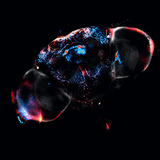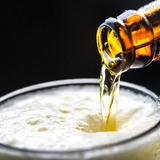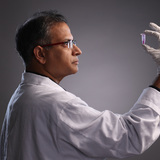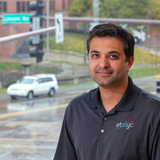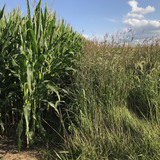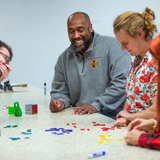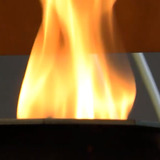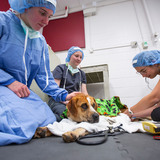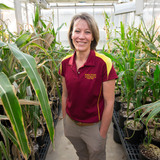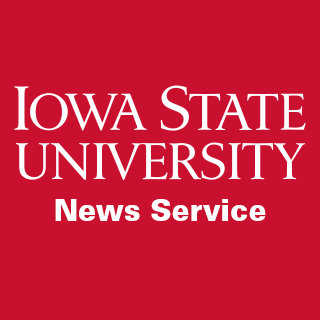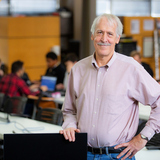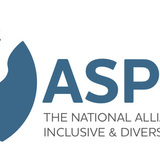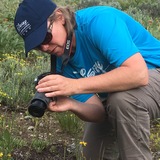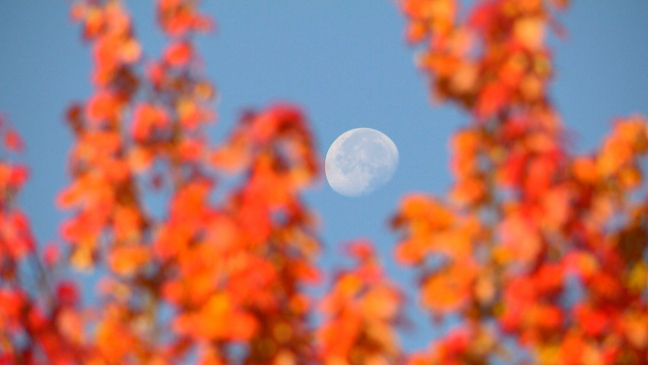News Archive
Monday, November 18 2019
-
Iowa State University scientists organize software competition to advance understanding of genetic function
Sequencing a genome is often easier than understanding the functions of individual genes. An Iowa State University scientist helps to organize a competition to evaluate the accuracy of software programs that predict gene function. The recently published results of the latest competition included 144 entries from 68 teams.
-
Money spent on beer ads linked to underage drinking
Advertising budgets and strategies used by beer companies appear to influence underage drinking, according to new research from Iowa State University. The findings show that the amount of money spent on advertising strongly predicted the percentage of teens who had heard of, preferred and tried different beer brands.
-
Iowa State delivers $3.4 billion impact to state economy
Iowa State University’s $3.4 billion impact on the state of Iowa reflects service to families, communities and businesses and benefits to society from an expanded economy and improved quality of life, according to an economic impact and investment analysis conducted for the Iowa Board of Regents.
-
Frank Figliuzzi to present Manatt-Phelps lecture
NBC News national security analyst Frank Figliuzzi will discuss personal, national and international security for the 2019 Manatt-Phelps Lecture in Political Science, presented at Iowa State University on Nov. 19.
-
More Americans struggle to fall asleep, stay asleep
A new Iowa State study finds more Americans have trouble falling asleep and staying asleep. Researchers cannot point to a specific reason why, but they suspect technology may be to blame.
-
Innovation Corps at Iowa State: Helping researchers turn ideas into companies
Iowa State University's Innovation Corps site is helping scientists and engineers prepare to move their discoveries toward commercialization. A key part of the preparation: talking to prospective customers about their actual needs.
-
Study shows how cover crops and perennials do not necessarily increase carbon storage in soil
An Iowa State University study delves deep below the surface to find how cover crops such as winter rye affect soil microbes a meter underground. The study found cover crops and perennials improve water quality but don’t necessarily lead to gains in carbon sequestration, a finding that could have implications for climate change.
-
Outreach efforts aim to make you love math – or at least hate it less
A team of Iowa State mathematicians is working to change perceptions by giving people a positive experience with math. The team doesn’t expect to change minds overnight. The goal is to help people see math as a way of thinking, organizing thoughts and making plans that applies to things they do every day.
-
Grant will help improve protective gloves for firefighters and first responders
The heat-protective gloves firefighters and first responders wear are thick, bulky and limit dexterity. That's why a team of Iowa State University researchers is working to improve the safety and function of the gloves as part of the personal protective equipment system.
-
Shelter animals receive care at ISU College of Veterinary Medicine on their way to adoption
A surgery, anesthesia and community outreach course for third-year veterinary students at Iowa State University prepares students for clinical practice while helping dogs and cats in animal shelters and rescues get adopted. The program treats all common problems presented in shelter pets, including eye, ear and skin problems and gastrointestinal parasites.
-
New grant will help scientists study how cover crops affect plant disease
An Iowa State University scientist is coordinating experiments across more than a dozen states to determine how the timing of cover crop termination affects the susceptibility of corn to disease. The experiments are part of a USDA-funded initiative that includes 100 scientists and 35 institutions to develop a suite of new tools to help farmers.
-
Training for Title IX investigators lacks tested, effective techniques
Interviews are the central component of any Title IX investigation, but new research finds the techniques investigators are using may not be the most effective. Iowa State University researchers evaluated the available training programs for investigators and identified techniques and suggested practices at odds with science-based interviewing strategies.
-
Change Agent: Doug Jacobson, protecting data, recruiting students to cybersecurity
Doug Jacobson -- already busy with cyberdefense research and helping build Iowa State's new major in cyber security engineering -- has found fun ways to recruit students into cybersecurity studies and careers.
-
Buttigieg jumps to second in Iowa State University/Civiqs poll
Mayor Pete Buttigieg is building momentum in Iowa, according to the latest Iowa State University/Civiqs poll. Of likely caucus-goers, 20% said Buttigieg is their top choice among the field of Democratic presidential candidates. That moves him to second in the poll – up from fourth in September – just behind Sen. Elizabeth Warren who maintained her lead at 28%.
-
Iowa State joins national alliance to develop a more inclusive and diverse STEM faculty
Iowa State University will join a national network of universities committed to enhancing the recruitment, hiring, and retention of diverse faculty in their institutions. Aspire: The National Alliance for Inclusive & Diverse STEM Faculty is a three-year program co-led by the Association of Public and Land-grant Universities, and funded by the National Science Foundation as part of its INCLUDES initiative.
-
Persistence pays off with first images of butterfly eggs
Kim Moss, assistant professor of art and visual culture and coordinator of the biological and premedical illustration program at Iowa State University, is the first person to shoot video and photos of where the Parnassius clodius butterfly lays its eggs — a missing piece of the puzzle that helps explain its link to climate change.
